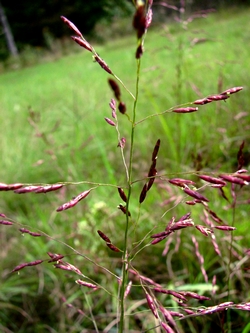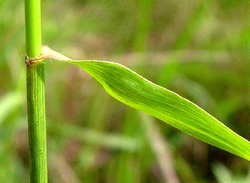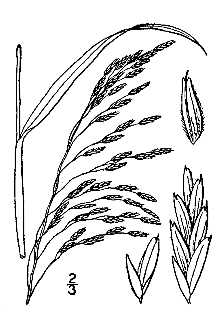
|

|

|
| Photos by Renee Brecht |
Britton and Brown. See
credits below.** |
| Botanical name: |
Tridens flavus (L.) Hitchc. |
| Common
name: |
grease grass |
| Group: |
monocot |
| Family: |
Poaceae |
| Growth
Type: |
graminoid |
| Duration: |
perennial |
| Origin: |
native |
| Plant
height: |
35"-75" |
| Foliage: |
blade flat, >1/2" wide, long, smooth; sheath flattened near base and keeled.Liguile has a ring of short hairs |
| Flowers: |
seed head is open cluster, 8-14", spreading, pyramidical, purple to black. |
| Habitat: |
shallow, infertile soil |
| Range
in
New Jersey: |
statewide
|
| Heritage ranking if any: |
n/a |
| Distribution: |
 |
| Misc.: |
warm season grass, consumed by all grazing livestock.
"Grease grass", for the oily, grease-like substance covering the seedheads.
|
|
|
Not sure what a word means? Use Answers.com:
|
|
Sources
**USDA-NRCS
PLANTS Database / Britton, N.L., and A. Brown. 1913. An
illustrated flora of the northern United States, Canada and the British
Possessions. Vol. 1: 223.
|
|